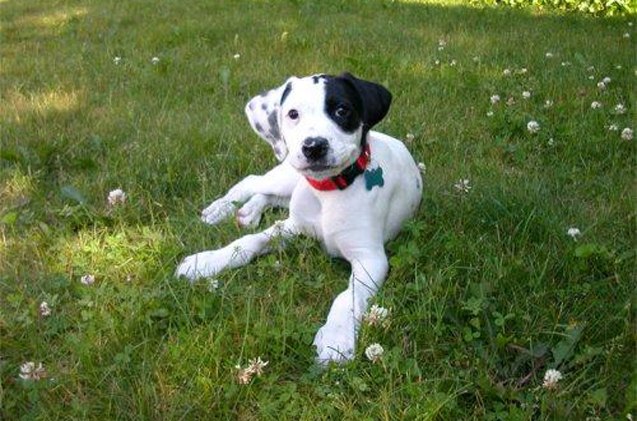Boxerdoodle


About Boxerdoodle
Also known as the Boxerpoo, the Boxerdoodle is a dog who will love you unconditionally and protect you from harm. This breed is also smart and hard working, and these pooches can be trained to do a variety of jobs, though they make ideal family dogs, too, because they get along great with kids and other pets.
Featuring the best of the Poodle and the Boxer, the Boxerdoodle is a popular designer dog breed, but continue reading to find out if it would be the right match for your family.
The Boxerdoodle is a cross between a purebred Boxer and Poodle.
The Boxerdoodle is a designer dog breed whose origins aren’t entirely clear, but both the Boxer and the Poodle are from Germany.
The Boxerdoodle is a cross between a purebred Boxer and Poodle.
When shopping for the right food to nourish your dog’s body and keep him at an ideal weight, look for a brand that uses whole, natural ingredients.
You can feed your Boxerdoodle about 2½ to 3 cups of a high quality dry food each day, but split this amount into at least two servings. If you also choose to feed your pet a high quality canned food for dogs, you should reduce the amount of dry food accordingly in order to prevent unwanted weight gain.
Boxerdoodles are smart canines that will generally be easier to train than other breeds.
Boxerdoodles are smart canines that will generally be easier to train than other breeds. Like Poodles, these pooches can display an eagerness to please, but like Boxers, they could sometimes be stubborn as well.
When training your dog, it is best to use positive techniques that involve the use of rewards, treats, and plenty of praise. While you want to be firm and establish yourself as the pack leader, you should never be harsh or loud with these dogs, as they’ll become upset easily.
Because they are multi-talented, Boxerdoodles can be trained to be hunting dogs, military working dogs, watchdogs, police dogs, and guard dogs. They also excel at competitive obedience and agility training.
A medium to large-sized breed, the Boxerdoodle weighs between 20 and 70 pounds.
You can expect a Boxerdoodle to be loving, friendly, and loyal to his family. These sensitive dogs can even be trained to work as therapy dogs, providing affection and comfort to everyone they meet, while taking their jobs seriously.
Patient, relaxed, and protective, Boxerdoodles also make fantastic family dogs who can get along great with children and other pets. You can expect that your dog will keep watch over your home, alert you to suspicious activity and intruders, and even showcase aggressive behavior if it’s necessary to ensure your safety.
These dogs are playful and energetic, making them a lot of fun, but they can also be noble and serious. They will thoroughly enjoy spending time with you and simply being in your company.
Like all other hybrid canine breeds, the Boxerdoodle could be susceptible to the health problems that most often affect its parent breeds. However, hybrid breeds do tend to be surprisingly healthy and hardy, and there is no guarantee that your dog will ever acquire any of the ailments that affect the Boxer and Poodle. There is no way to predict the long-term health of an individual dog, so it is best to simply be aware of what’s possible and take your dog to the vet if symptoms arise.
In the case of the Boxerdoodle, keep an eye out for symptoms associated with epilepsy, skin issues, allergies, hip dysplasia, and progressive retinal atrophy.
The Boxerdoodle has an average lifespan of 10 to 14 years.
Boxerdoodles have a high energy level, so you should give your pet at least 60 minutes of exercise each day. When this breed doesn’t get enough exercise, it could become bored and start exhibiting negative behaviors.
If you have a large yard that is enclosed and safe, you can let your dog run around in the open space. Walks, jogs, trips to the dog park, and interactive play sessions outside are ideal for Boxerdoodles. Also be sure to provide your pet with a variety of toys that he can play with while he is indoors.
You can expect a Boxerdoodle to be loving, friendly, and loyal to his family.
The Boxerdoodle is not recognized by the American Kennel Club, as it is considered to be a hybrid breed. However, this breed is recognized by the American Canine Hybrid Club (ACHC), the Designer Dogs Kennel Club (DDKC), the Dog Registry of America, Inc. (DRA), and the International Designer Canine Registry (IDCR).
A Boxerdoodle’s coat could either be short and smooth like that of the Boxer, or long, wavy, thick, and curly like the Poodle’s. Shedding can range from low to moderate.
If your Boxerdoodle has a curly, wavy, or long coat, you’ll need to brush him often to prevent matting and remove loose hair. Regular trips to the groomer will also be necessary. However, if your dog features a short coat, you can brush him weekly.
A Boxerdoodle puppy will be super cute and hard to resist, but he should be handled with care, especially when children are playing with him, so supervise interactions between your pet and your kids to ensure no one gets hurt.
It’s always best to start socializing and training your puppy as soon as you bring him home. This will ensure that he not only learns the rules of the house, but will also learn to get along well with a variety of people and animals.
Photo credit: Ultra_violet/Flickr; Monster/Flickr

Lisa Selvaggio is a freelance writer and editor, and our resident cats-pert, with certifications in pet nutrition and pet first aid. She enjoys producing content that helps people understand animals better so they can give their pets a safe and happy home.
More by Lisa Selvaggio

























